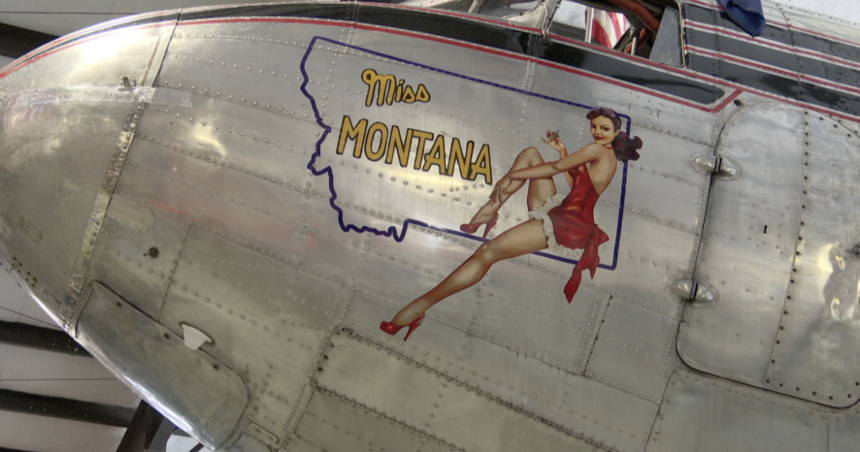MISSOULA — Miss Montana played a pivotal role 75 years ago when it flew a 16-man crew of smokejumpers into the Mann Gulch Fire. Unfortunately, only three of them survived, marking a significant moment in the history of smokejumping.
Bryan Douglass, a pilot for Miss Montana, recounted the harrowing experience of some of the jumpers from that fateful day.
“One of the jumpers, Wag Dodge, and Earl Cooley, one of the earliest smokejumpers, were lying on their bellies looking out the door of the plane as it circled over the fire at Mann Gulch, trying to determine the best drop spot and where to jump out,” Douglass explained, gazing at the door of the plane.
“Every time I peer out this door, I can’t help but think of those two lying there, completely unaware of the tragedy about to unfold,” Douglass continued.”
Patt Collins from the Museum of Mountain Flying in Missoula emphasized that many current smoke-jumping practices have been shaped by the lessons learned from the Mann Gulch incident.
“Right here in Missoula, we have the Fire Sciences lab located near the airport, where they study fire behavior,” Collins stated.
“By analyzing various factors such as weather conditions, fuel conditions, and terrain, they have been able to improve their strategies based on the tragic events like Mann Gulch and others,” Collins informed MTN.
Despite the tragic outcome of Miss Montana’s involvement in the Mann Gulch Fire, it was considered the best aircraft for the job at the time.
Douglass, who has been associated with Miss Montana for many years, explained why this plane is considered the perfect machine for combating wildfires.
“It was fast, had a high carrying capacity, and could land in short distances in backcountry strips, in addition to allowing for skydiving,” Douglass explained. “It was perfectly suited for the job and continues to be used for similar purposes today.”
Douglass also credited the volunteer maintenance and donations from people across the state for keeping Miss Montana airborne for 80 years.
“It’s truly remarkable that this plane, which dropped those jumpers in 1949, is still flying and operational, especially in Missoula, Montana. Its longevity and versatility are extraordinary, as it even crossed the Atlantic in 2019 and back. Apart from the crosses in Mann Gulch, Miss Montana serves as the last tangible link to the events of that tragic day”
Miss Montana flew over Helena and the site of the Mann Gulch Fire on Sunday, August 4.





